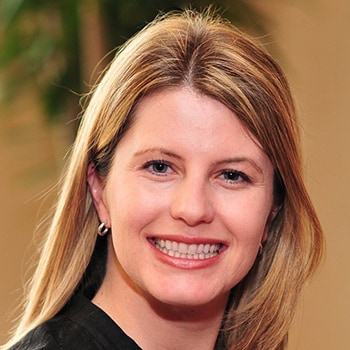Performance management: Playing a winning hand has been saved

Performance management: Playing a winning hand 2017 Global Human Capital Trends
28 February 2017
Across industries and geographies, many companies are redesigning performance management from top to bottom, from goal-setting and evaluation to incentives and rewards—and seeing the business benefits.
Introduction
Learn More
View 2017 Global Human Capital Trends
Create and download a custom PDF
Explore the infographic
Watch the video
Over the last five years, organizations have radically changed the way they measure, evaluate, and recognize employee performance. Today, with much initial experimentation, continuous performance management practices are being deployed on a wide scale. While not all the tools are in place at every organization, the new practices are becoming clearer and more standardized, and they are definitely working. Agile goal management, check-ins, and continuous feedback are becoming common, and new models of evaluation and rewards are being adopted next.
- The redesign of performance management is picking up speed: 79 percent of executives rate it a high priority, up from 71 percent three years ago, with 38 percent calling the problem “very important.”
- Company capabilities to implement performance management have improved. Our research shows organizations are 10 percent more capable than they were in 2015, and most are heavily focused on retraining leaders to implement agile, developmental management approaches.
- The impact of these new performance practices is high: 90 percent of companies that have redesigned performance management see direct improvements in engagement, 96 percent say the processes are simpler, and 83 percent say they see the quality of conversations between employees and managers going up.1
The performance management (PM) revolution is in full flight. Across all industries and geographies, companies are reevaluating every aspect of their programs, from goal-setting and evaluation to incentives and rewards. Organizations are aligning these changes to both business strategy and the ongoing transformation of work. While all the software tools are not here yet, there is evidence that the new rules of performance management are understood and working well.

As work shifts, so does PM
Why is the reinvention of performance management so important? Quite simply, because the way we work has changed.
The traditional end-of-year appraisal, designed in the 1970s, is clearly not effective anymore. In 2015, our Global Human Capital Trends research showed that 82 percent of companies reported that performance evaluations were not worth the time. A separate study reported that 41 percent of companies found widespread manager bias, and 45 percent believed performance evaluations did not motivate employees.2
Today, as companies operate as a network of teams,3 careers and learning are strategic,4 and companies are shifting from “jobs to work” in their operations,5 the need to align goals, provide feedback, and coach for performance is real-time, continuous, and multidirectional.
In addition, several organizational changes have made developing a more agile process important:
- Employees want more regular feedback. Informed by their experiences in social media, people want to get and give feedback regularly. Cisco’s new performance management process (which we described last year in Global Human Capital Trends 2016),6 has dramatically improved communications and feedback, enabling managers to touch base with employees on a continuous basis using new tools and check-ins that take very little time.
- Employees and organizations expect continuous learning. New performance management practices (and tools) facilitate regular discussions about capabilities and skills, helping employees learn where to focus and what learning to adopt. New learning solutions are creating an “always on” learning environment to support this need.7
- Important decisions about whom to promote, how much of a raise to give, and whom to move into a new role are getting easier and better through data. Ninety-one percent of companies that have adopted continuous performance management say that they now have better data for people decisions,8 making major progress in removing bias and discretion in promotion and advancement.
- Companies operate in teams, so performance management must be local. All of our discussions with companies like Cisco, GE, IBM, and Patagonia show that the new continuous practices empower local leaders, create better relationships among teams, and help teams work more closely together. Companies like Google, GM, Atlassian, and Cisco have now studied the behavior of high-performing teams and use continuous performance management to directly help teams learn from high performers.9
Hundreds of companies—including Adobe, IBM, GE, Goldman Sachs, New York Life, Juniper Networks, and Cisco—continue experimenting with new processes, and most are finding great value.10 The focus has shifted from talking about people to talking with people in open conversations. “Our new performance approach is focused on improving discussions, creating frequent check-ins, and creating a developmental focus,” said Amy Berg, director of talent at Adidas Group.11
Team effectiveness, development, collaboration, and individual performance
A critical goal in PM experimentation is to devise ways to align it more closely with business outcomes. As organizations become more team-centric, PM is also beginning to shift from focusing just on an employee’s individual achievements to evaluating her contribution to a team and the team’s impact on driving overall business goals.
Cisco, GE, and Google have all pioneered this model. These companies have built or bought sophisticated software to understand team dynamics, evaluate group goal systems, and gauge how effectively employees contribute to their teams.12 The goal of PM is thereby transformed from boosting an individual employee’s performance to improving the results of the team. If the team wins, the employee wins. If the team wins, the company wins.
When organizations focus on team performance, they evaluate success by different metrics. Trust, inclusion, diversity, and clarity of roles are critical to team success. Team leaders must be hands-on and actively engaged. And teams must be connected to other teams to succeed. Measuring these new metrics requires new tools and approaches, thoughtful experimentation, and a willingness to adopt new models.
Developing greater clarity about how performance is measured has surfaced as a core value at many organizations, particularly around check-ins with managers and goal-setting for employees. Some smaller companies have greater flexibility to set goals widely at the individual and team levels, while larger companies may focus on departmental goals. Either way, the old system of cascading goals from the CEO all the way down to the individual contributor is not part of the new design.
One sign of positive change is a rise in employee-driven communication rather than one-way feedback. Evaluating managers on the quantity and quality of conversations is becoming a key to both team and manager success.
While the use of a forced distribution curve may be fading, many organizations are unwilling to give up the concept entirely. Ratings are still widely used, though often with qualitative measures instead of numbers. However, today’s new practices look at performance curves and ratings based on richer data, using input from many sources, and in the context of a continuous discussion about things that happened all year—rather than delivering a simple end-of-year report that often loses sight of all the things that happen over that 12-month time period.
Given the pace of change, it is unclear where this revolution will end, what the new PM gold standard will become, or if a single standard will—or even should—emerge. New practices are being tested in real time through a process of trial and error. Different companies, industries, and geographies will likely reach different conclusions about what constitutes an optimal PM system.
GE, a company well known for its pioneering work in cascading goals and forced ranking in the 1970s, has been reinventing its performance management over the last two years. Now, after removing ratings, adopting ongoing touchpoints, and implementing procedures to deliver immediate horizontal and vertical feedback, the company has completely reinvented its process and built a performance management system shaped by and for its employees.
GE’s new process asks employees to focus on performance development rather than appraisal, teaches “People Leaders” to “inspire and empower” their teams, helps employees set real-time priorities based on customer input, and, ultimately, increases speed and collaboration. The result: GE is seeing dramatic improvements in employee engagement, time to market, and speed of innovation.13
The promise and uses of better data
As part of PM experimentation, companies are seeking ways to apply data to performance measurement. For example, GE developed an in-house app to gain insights from employees and managers at all levels, including upward feedback on managers. This model rests on the premise that more information yields better data, which in turn brings better clarity and insight, leading to continuous improvement.14
But how is all this data leveraged to make actual decisions about pay and promotion? More precisely, how can an organization’s systems take gainful advantage of these new sources of performance-related data? These are open questions that are still being tested.
The good news is that the increase in the quantity and quality of data gives organizations more information on performance and better-quality data with which to identify high performers and make appropriate pay, promotion, and other rewards decisions. Better-quality data also makes course corrections easier for both individuals and the PM system itself. But the work continues, and many organizations find this the hardest aspect of PM to transform.
The challenges of new PM models
While most companies may wish to create a single, simple PM system across the organization, many are finding that doing this is challenging in practice. At many global companies, regulatory or cultural factors restrict many PM innovations, and can even require organizations to maintain ratings. Adidas Group, for instance, found that its employees in Asia wanted a more traditional, structured approach, while US workers wanted a more agile process.15
Finding the right solution takes time and commitment. In its research, the NeuroLeadership Institute found that 88 percent of companies took two years to gain significant traction with a new PM system. Training and change management are the most important elements of success in this endeavor.16 As one executive put it: “It’s a journey needing sustainment and continuous improvement. Habits and culture change slowly and through persistence.”
Software leading in a new direction
Given this ferment of experimentation, it is not surprising that the HR software industry is finding itself in flux. In many ways, HR departments are ahead of HR technology providers. The vast majority of PM software tools, including those developed by market leaders and major human capital management cloud vendors, were developed around the old once-a-year model. Still, a small but growing segment of the PM tools market is leading the world of HR software in a completely new direction. The dominant characteristics of newer tools include:
- Enabling goal making to be more social and transparent, mobile, and digital: Many new vendors now offer mobile goal-setting and performance applications that let teammates set, share, and collaborate on goals online.
- Enabling easy progress tracking: Tools to link goals, often using the Objectives and Key Results (OKR) model, allow people to update their goals easily and see how others are making progress.17
- Providing continuous feedback: Tools that help employees deliver or request feedback, often integrated with email systems and other productivity tools, enable continuous improvement loops.
- Providing instant information: Periodic team surveys help managers evaluate team engagement and effectiveness, which are then used to evaluate managers. Regular engagement, or “pulse” surveys of employees offer insights about when and why certain teams are underperforming or might be unhappy or frustrated.
- Deploying data/analytics: Big data tools look at performance online and send suggestions to managers based on artificial intelligence to encourage coaching.
- Supporting career development: Tools can recommend new jobs and careers based on an individual’s internal experiences with job mobility and his prior success in the company.
- Offering easy integration: The integration of PM tools with products like Slack, Outlook, Gmail, and other productivity tools where people spend most of their time incorporates PM into everyday work.
As the PM revolution gathers speed, the final chapter has yet to be written. Most businesses today believe they have permission to reinvent, experiment, and innovate with PM systems. A few short years ago, this was not true. Now, the weight of experience and the clear benefits for both organizations and employees have pushed this trend dramatically forward. Companies are exploring and finding what works for their highly individualized situations. It is an exciting evolution—pioneered by the foresight and courage of a few innovative organizations several years ago.
Lessons from the front lines
Patagonia, a designer and manufacturer of outdoor apparel and accessories, embarked on a new, team-centric performance program two years ago. Today, Patagonia encourages individuals to set financial and stretch goals (using the OKR methodology) and to check in at least quarterly with their managers. The company has eliminated year-end ratings. Bonuses are based on goal attainment, and base pay is allocated according to skills and relative performance. The entire process has been implemented through a mobile app called HighGround.
These developments did not happen overnight. For Patagonia, transforming PM took years of rethinking, retraining, and reeducating employees. The company noted that, in the program’s first year, feedback was very positive, as people were afraid to give sharp suggestions. But by the end of the second year, managers built a “muscle” about having candid developmental conversations, and people felt comfortable that check-ins and feedback would be useful, positive, and not punitive.
Now that effort has paid off. The new PM process has generated better financial performance, improved individual performance, and strengthened engagement. Patagonia has shown that people and teams who participate more regularly in check-ins and feedback outperform their peers on a wide range of financial and talent measures.18
Other organizations that revolutionized performance management several years ago are still reaping significant rewards. Adobe changed its performance management approach in 2012, abolishing annual performance appraisals, ratings, and a forced distribution curve and moving to an approach they called “Check-ins.” While Adobe updated its “Check-in” brand in 2016 to keep it feeling current, the core concepts have held steady across the last four years: a focus on managers setting clear expectations, managers and direct reports collaborating on employee feedback, and direct reports being responsible for development (with managers also sharing responsibility). Since the new approach is a continuous performance process, either managers or direct reports can request a check-in at any point during the year.
Using its engagement survey from 2012 as the baseline, Adobe continues to monitor the progress and effectiveness of its Check-in program. For example, there has been a 10 percent increase in affirmative replies to the question “I would recommend Adobe as a great place to work,” and a 10 percent increase in affirmative replies to the question “I receive ongoing feedback that helps my performance.”
As one of Adobe’s HR leaders noted, “Four years is a long time for a process to remain the same—especially in the dynamic tech industry. However, this approach is significantly better than the prior approach, so we haven’t needed to make substantial changes.”19
Start here
- Identify a strategy and philosophy for PM: What is the organization trying to achieve through a new PM system? How can it best be aligned with business strategy? What approach will develop leaders most effectively? Instead of cascaded goals that lock employees into a set of activities, consider a more flexible, agile, transparent approach to goal setting.
- Look to peers: Identify companies in the industry or region that are leading the PM revolution and that face comparable challenges, dynamics, and opportunities.
- See what is working: Among peers that are experimenting with PM, identify the design elements, tools, and processes that are most effective for them. Internally, study high-performing individuals, teams, and leaders to find ways to incorporate their practices throughout the rest of the organization.
- Tailor PM to strategic and organizational needs: The core principles of check-ins, agile goal setting, and frequent feedback are becoming common around the world. But some companies still want formal reviews, numeric ratings, and development plans. Organizational culture takes years to change, so companies should adopt new practices at a speed that works for the business.
- Upskill managers in coaching skills: Continuous feedback for employees is a critical feature of the new PM paradigm, yet managers often need help learning how to be full-time coaches rather than part-time evaluators. Companies adopting a new PM approach should focus heavily on leadership development, building new “muscles” in managers, and creating discipline around feedback, coaching, and collaboration.
- Put it all together: Determine how changes to PM will inform the organization’s rewards, promotion, and succession processes. Approach this from the employee experience perspective.
Fast forward
In the future, leading companies will create a continuous, highly agile process among employees and teams, as well as among employees and leaders. Many will take advantage of new software tools that integrate PM into daily work and use the greater quantity and richer quality of data now available. The dreaded end-of-year evaluation will be gone, replaced by continuous feedback flowing between employees and managers.
These changes are not merely new processes but, rather, new organizational muscles. As such, they will take time to develop and need constant exercise to maintain. But over time, they will become stronger. PM changes that seem difficult in the early stages of transformation become more natural over time. As trust grows, feedback becomes more direct and constructive, and changes are accepted.

Deloitte’s Human Capital professionals leverage research, analytics, and industry insights to help design and execute the HR, talent, leadership, organization, and change programs that enable business performance through people performance. Visit the Human Capital area of www.deloitte.com to learn more.
© 2021. See Terms of Use for more information.






